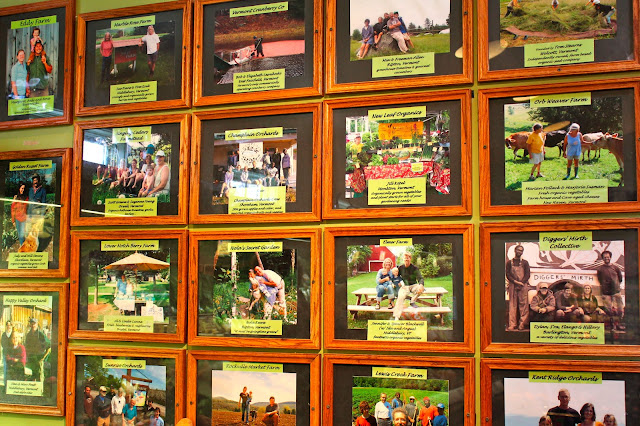St. Patrick is the patron saint of Ireland and the holiday originally known as the Feast of St. Patrick was first celebrated by the Irish in Europe in the 9th century. In the early 1600s, it became recognized as a holy day of obligation for Roman Catholics in Ireland and in 1903, it became an official public holiday in Ireland. St. Patrick's Day falls during the Christian season of Lent and Irish families would traditionally attend church in the morning and celebrate in the afternoon. Lenten prohibitions against the consumption of meat and alcohol were waived and people would dance, drink and feast. The traditional meal was Irish bacon and cabbage, but around the turn of the century, Irish immigrants living in New York City's Lower East Side substituted corned beef as a less expensive and more widely available option. Thus, the American celebration of St. Patrick's Day typically consists of corned beef, cabbage, potatoes, and, of course, a pint or two of Guiness.
I chose to make our Feast of St. Patrick in a pressure cooker that my Uncle Tom sent to me. The pressure cooker is great for making one-pot meals, cooks dried beans in a snap (even without pre-soaking!), and doubles as an excellent rice cooker. It is similar to a crock pot, except that instead of slow cooking foods, it cooks them quite rapidly to juicy, tender perfection. I get a lot of use out of mine. The handbook that came with my pressure cooker included a recipe for corned beef & cabbage, which I used as my framework for this meal. No pressure cooker? No problem. You can make this same meal in a dutch oven or in a crock pot. You will just need to adjust the cooking times accordingly.
Corned Beef & Cabbage with Potatoes & Carrots:
3 lbs Corned Beef Brisket
12 oz Guiness
1 med onion, halved
1 shallot, halved
3 whole cloves garlic
2 cups of water or beef stock
4 medium red potatoes, halved
1 large head of cabbage, cut into 8 wedges
1 cup carrots, peeled and halved
Whole grain Dijon mustard
Trim any excess fat from the corned beef and if the seasoning packet is separate, open it and rub the brisket with the seasonings. The brisket I selected comes from Lou's Garrett Valley Naturals and came pre-seasoned in a brine made of water, sea salt, unrefined sugar, beet powder, garlic powder, bay leaves, mustard seed, and allspice. Place the brisket in the pot, then add the beer, onion, shallot, garlic, and the water or stock. Then, lock the pressure cooker lid, select the meat setting, and cook for 60 minutes. Release the pressure, open the cooker, and add the potatoes, carrots, and cabbage. The carrots I used came from Elmer Farm in East Middlebury, VT and the cabbage is from Blackwell Roots in Cabot, VT. Re-lock the lid, select the vegetable function, and cook 10 minutes. Serve with a bit of Dijon mustard for the meat.
And now, for the birthday cake! I chose this cake because it is my absolute favorite. The buttermilk cake is super moist and the tart lemon cream cheese frosting tastes so great with some of our blueberries that we grew and froze last summer. In addition to using our own blueberries, I also used our eggs, cream cheese from Green Mountain Farms, buttermilk from Animal Farm and flour from Nitty Gritty Grain Co. This cake is really easy to make and can be paired with lots of other fruit toppings depending on what's in season or stocked in your freezer.
Buttermilk Cake:
1 cup sugar
1/2 cup unsalted butter, softened
2 eggs, beaten
2 tsp vanilla extract
3/4 cup buttermilk
1 1/2 cup cake flour
1/2 tsp salt
1 3/4 tsp baking powder
Preheat oven to 350 Fahrenheit. If using frozen fruit, remove it from the freezer and set aside to defrost. Grease and flour a 9 inch round cake pan, unless you are using a silicone pan. In a mixer with a paddle attachment, mix the softened butter and sugar until they are creamy. Add the eggs, then the vanilla, then the buttermilk. Stop the mixer and scrape the sides. In a separate bowl, combine the flour, salt, and baking powder. If you don't have cake flour, you can use all-purpose flour and substitute 2 Tbsp of it for 2 Tbsp of cornstarch. Sift the flour mixture once or twice. Turn the mixer on medium and add the flour mix in several batches until combined. Pour the batter into your cake pan and bake 30 minutes or until a toothpick inserted in the center comes out clean. Transfer the cake to a rack and allow it to cool before frosting.
Lemon Cream Cheese Frosting
8 oz cream cheese, softened
1/4 cup unsalted butter, softened
2 Tbsp lemon juice
2 tsp lemon zest
1 tsp vanilla
1 1/2 cups confectioners sugar
Mix all but the sugar in a mixer with the paddle attachment. Blend well. Sift the confectioners sugar and then add to the mixer in two batches. Blend until smooth. Spread over the cooled cake.













